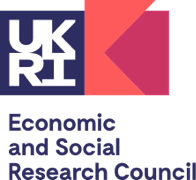The time use field has a rich history of international co-operation and projects harmonising time use data collected at different points in time, from different samples and across countries.
While working for the United Nations Institute for Training and Research and the Hungarian Academy of Sciences in the 1960s, Alexander Szalai co-ordinated the first Multinational Time Budget Study. This project developed a standardised sampling procedure, diary format, and data collection procedure implemented initially by twelve countries in 1965. Other countries later copied the Szalai approach, and many of the original twelve have since replicated their original 1965 studies.
At a meeting in Varna, Bulgaria in 1970, the Working Group on Time Budgets and Social Activities of the International Sociological Association established the International Association for Time Use Research (IATUR), which co-ordinates time use conferences, disseminates information and maintains the Electronic International Journal of Time Use Research.
More recently, Eurostat has co-ordinated the development of Harmonised European Time Use Study (HETUS) data collection guidelines, which were piloted in 20 countries between 1996 and 1998, and have influenced time use data collection in 21 countries between 1999 and 2003. The International Labour Organisation has also developed guidelines for conducting time use research, and the United Nations has developed the Trial International Classification of Activities for Time Use Statistics (ICATUS).
The United Nations Development Programme now includes the balance of paid and unpaid domestic work time between men and women as one of its human development indicators (see Table 32 in the UNDP Human Development Report 2007/2008).
The United States has generated two harmonised time use projects. The Environmental Protection Agency designed the Consolidated Human Activity Database (CHAD) to allow users to generate exposure statistics for the USA on-line (based on data collected in 10 time use studies in the USA). The American Heritage Time Use Study (AHTUS) contains harmonised time use datasets from the United States from 1965-66 through 2013, and facilitates the study of national accounts as well as monitoring of changes in time use in this country.
The conceptually similar Multinational Household Expenditures Study (MHES) was developed by Duncan Ironmonger at the University of Melbourne in 1998. This parallel multinational study was established to encourage research into how individuals and households spend their money as well as their time.


